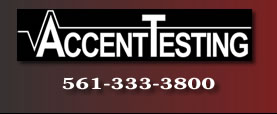

Putting the SAT in its place
Editorial
At the same time that public schools are placing heavier emphasis on a single standardized test -- the annual standards exam that each state offers -- colleges are edging in the other direction. More are de-emphasizing the SAT, which for years ruled the college admissions scene. And though their motives for this might have a tinge of self-interest, this new flexibility in college admissions is a welcome change.
The original intent of the SAT (which used to stand for Scholastic Aptitude Test but now is the official name of the exam) was to give talented students a crack at admission to top universities by showing their inherent smarts even if they'd never had the advantages of attending a prestigious Eastern prep school. Over the years, though, it has become a thriving industry. The test's owner, the College Board, also puts out the PSAT, or preliminary SAT, and recently started up a pre-pre-SAT for middle school, as well as selling an SAT study guide and online course for a combined price of $89.99. Other companies have raised the ante by offering prep courses for the SAT and its increasingly popular rival, the ACT, that cost hundreds or even thousands of dollars.
Clearly, the college entrance exams created for middle-class and impoverished students give the edge to affluent teenagers. At the same time, studies have found that those tests aren't stronger predictors of a student's success in college than grades, class rank or a record of rigorous courses. For this reason and others, an increasing number of colleges have made the SAT an optional part of the application process.
Most of them will consider SAT or ACT scores if an applicant sends them, but don't require them. (One, Sarah Lawrence College in New York, refuses to consider them at all.) Some allow students to pick from a menu of information they would like to submit, including scores on Advanced Placement or International Baccalaureate tests. Altogether, 875 accredited four-year colleges -- 38% of the total -- provide some flexibility on the college entrance tests. These include most campuses of California State University.
Over the last several years, more top-tier colleges and universities have been joining the trend. By the end of 2007, according to a 2009 article in the Journal of College Admission, more than a quarter of the top liberal arts colleges in the country had some sort of flexible policy on tests, a number that rose to 30% about a year later. According to FairTest, a nonprofit organization that opposes what it sees as overuse of standardized tests, those include Bennington, Bowdoin, Middlebury, Mount Holyoke and Smith colleges, as well as Wake Forest University and the University of Colorado at Boulder. In 2009 alone, such "name" schools as Bryn Mawr, Colby and Connecticut colleges, and American and New York universities, added themselves to the list.
It should be noted that the schools have a vested interest in making the switch because of popular college rankings, most famously those published each year by U.S. News & World Report. When test results are optional, only students with high scores are likely to submit them. That in turn boosts the average score of admitted students, which is a factor in each college's ranking. Test-optional schools also experience big increases in applications -- also good for their rankings, which are closely watched by many applicants -- as well as a greater diversity of applicants.
But it is also true that follow-up studies conducted by some of these schools found that students who are accepted without the scores are as successful in college as those who submit them.
Let's be clear: Colleges shouldn't search out novel ways to game the rankings (and test-optional admissions aren't the only way some of them do so). Nor are the SAT and ACT without a useful role in college admissions. They are valid predictors of success, along with other factors, and can be especially helpful in detecting bright students whose grades don't reflect their potential. Conversely, though, many great students score poorly on standardized tests, especially if they lack the financial means for extensive test-prep courses and tutors.
Admission to college has escalated into an arms race, with too many families relying on rankings that might not give them meaningful information about particular schools, and spending whatever it takes to give their children an advantage. In this scenario, entrance exams have been given disproportionate influence. We're glad to see a movement toward a system that, without sacrificing high standards, brings flexibility into the college admissions process.
Source: LA Times

